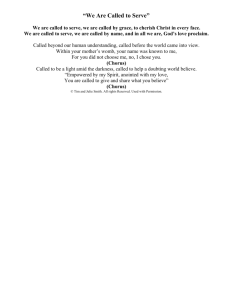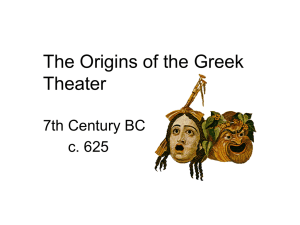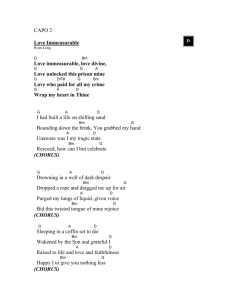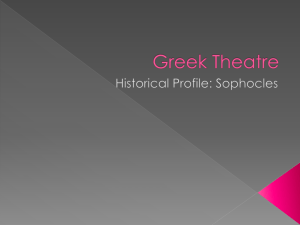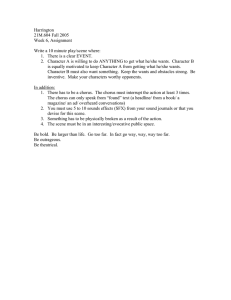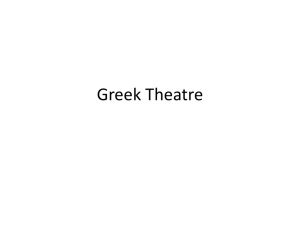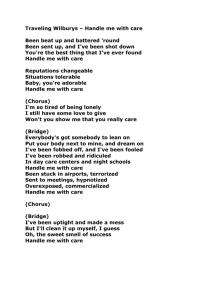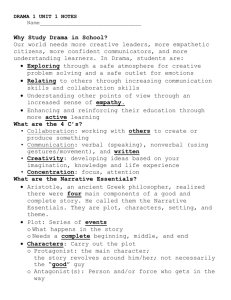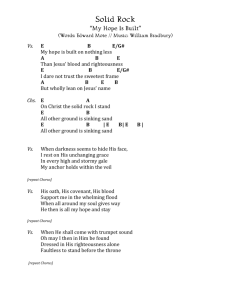Lec #5 Dramatic Competitions
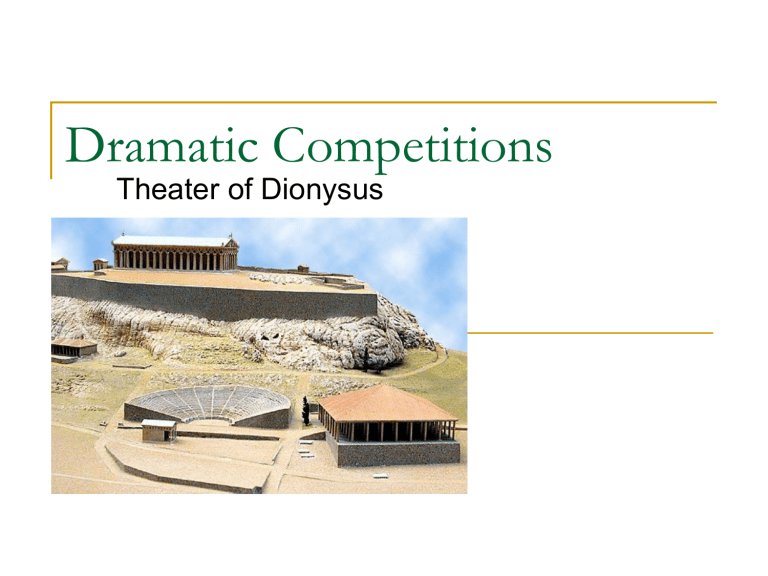
Dramatic Competitions
Theater of Dionysus
Role of Drama in Athens
Comedies and tragedies were performed in the city as part of an important civic religious festival, the City
Dionysia.
The festival lasted several days and included several types of performance, all of which were competitions for important civic honor and prizes
Dramas usually focused on the city and city life of
Athens
Role of Drama pt 2
Audience and most performers were citizens
The judging of the dramatic competitions followed Athenian democracy —any citizen could participate
Judges were selected randomly from the audience (giving the gods a chance to participate). An urn from each of the 10 tribes contained the names of citizens eligible to serve as judges; to prevent bribery, one name was drawn from each urn at the start of the festival.
The Competitions
Dithyrambs were performed by two choruses, one composed of 50 men and one of 50 boys, who sung and danced in honor of Dionysus.
Each of the 10 tribes of Athens put on a dithyramb; each set of choruses was trained and financed by a choregos , a wealthy citizen who did this as part of his civic duty. The prize went to the choregos and the tribe he represented.
Comedies: Initially 3 and eventually 5 comic playwrights, each presenting one comedy, competed for the comic prize. Comedies were set in the contemporary era and often caricatured living as well as fictional Athenians.
Tragedies and Satyr Plays: Three tragic playwrights, each presenting
3 tragedies and a single satyr play on a separate day, competed for the prize in tragedy. Like tragedies, satyr plays were set in the mythological past and featured gods and heroes, but the chorus of the this type of drama was always composed of satyrs, boisterous, half-animal companions of Dionysus whose comical predicaments contrasted with the serious tone of the preceding tragedies.
Structure of Greek Tragedy
Prologue : Spoken by one or two characters before the chorus appears. The prologue usually gives the mythological background necessary for understanding the events of the play.
Parodos : This is the song sung by the chorus as it first enters the orchestra and dances.
First Episode : This is the first of many "episodes", when the characters and chorus talk.
First Stasimon : At the end of each episode, the other characters usually leave the stage and the chorus dances and sings a stasimon, or choral ode. The ode usually reflects on the things said and done in the episodes, and puts it into some kind of larger mythological framework.
{NOTE: For the rest of the play, there is alternation between episodes and stasima, until the final scene.}
Exodos : At the end of play, the chorus exits singing a processional song which usually offers words of wisdom related to the actions and outcome of the play.
Dionysus
The son of Zeus and Semele, a woman of
Thebes
God of wine and madness, vegetation, and the theatre
Theater performances often had religious significance in the worship of Dionysus
[punishment for wrongs, tragic death, loss of identity {masks on actors & chorus}]
